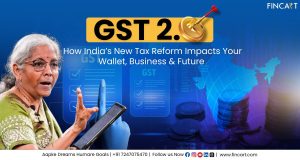Table of Contents
ToggleAt the end of the day, an investor aims to gain the maximum possible return on their investments, and achieving maximum returns also means minimising liabilities, especially in terms of taxes. Everyone wants to keep as much of their hard-earned money as possible, and one effective way to do this is by exploring investment plans that not only yield high returns but also come with tax benefits. Investing in such schemes is a key part of tax planning. So in this blog, we’ll take a look at the various Tax Saving Investment options in India so you can enjoy the dual benefit of creating wealth while reducing your tax liabilities.
Best Tax-Saving Investment Options in India
Under Sections 80C, 80D, 80CCC, 80CCD, 80TTA, 80TTB, 10 (10D), among others of The Income Tax Act, 1961, one can enjoy various tax deductions, exemptions, and benefits by investing in income tax saving schemes. In India, there’s a plethora of tax saving plans that offer tax benefits available, but the abundance of options can be overwhelming. Therefore you need to take a step back and educate yourself about the various schemes. Knowing about the best available options will help you with your tax planning, as you will be able to choose the schemes that best align with your financial circumstances, goals, and risk level.
So here are the 10 best tax-saving options in India for you to choose from:
1. Life Insurance Policy
Life insurance is a part of every solid financial plan. In case of an unfortunate event, it helps safeguard the financial future of the policyholder’s loved ones. There are different types of life insurance policies, such as term insurance, money-back plans, and endowment plans. In addition to providing a safety net for your family, life insurance also provides tax benefits, so if you are the main earner of your family, it is vital to get insured as soon as possible.
Tax Benefits Under Life Insurance:
- Under Section 80C of the Income Tax Act, you can get tax deductions on the premiums paid on policies you take for yourself or your family.
- In a financial year, a maximum deduction of Rs. 1,50,000 is allowed, which is applicable for individual taxpayers as well as HUF taxpayers.
- Under Section 10(10D) of the IT Act, the death benefit is tax-free.
- In case the death benefit is received by someone other than the nominee, then the taxable amount will depend on the relationship between the policyholder and receiver.
- If you use a life insurance policy for retirement, the money you get when it matures is also tax-free.
- If you surrender the policy within five years, any deductions you claim in that period will be added to your income and accordingly taxed.
2. Unit Linked Insurance Plan (ULIP)
A Unit Linked Insurance Plan is a great long-term option if you’re looking to combine the benefits of investing with insurance. Some portion of the premium you pay goes towards your life insurance, whereas the rest of the premium is invested in the market. You can choose between investing in equity funds or debt funds based on your goals and risk tolerance, and should the market conditions or your goals change, you have the freedom to switch from one to another anytime you want. ULIPs allow you to earn a rate of interest ranging from 11% to 20%. This combination of insurance and investment makes ULIP one of the most popular tax-saving schemes in India.
Tax Benefits Under ULIP Plans:
- The premiums paid on insurance are eligible for deductions under Section 80C of the Income Tax Act.
- A maximum deduction of Rs. 1.5 lakh is allowed per financial year.
- Death benefit and maturity benefits are tax-free under Section 10(10D) of the IT Act.
- The maturity benefit is taxable if the premiums paid exceed Rs. 2.5 lakh in a year.
- If you terminate the policy before the lock-in period of five years, the maturity benefit will also be taxed.
3. Sukanya Samriddhi Yojana (SSY)
Sukanya Samriddhi Yojana is a part of the Beti Bachao Beti Padhao campaign so the scheme is backed by the Government of India. The goal of SSY is to promote the well-being of the girl child and motivate parents to save for their daughters’ future needs, such as their education and marriage. This scheme has also gained popularity among a considerable number of salaried individuals as a tax-saving investment in their financial portfolios and is recommended by any investment advisor if you are looking to secure your daughter’s future while enjoying tax benefits. One can get a return of 8% per annum for a lock-in period of 21 years.
Don’t fall behind your taxes!
Get in touch with Fincart to handle your taxes and optimize your savings.
Tax Benefits Under SSY Plans:
- By investing in SSY, you can claim deductions up to Rs. 1.5 lakhs per year under Section 80C of the Income Tax Act.
- Under Section 10, any interest you earn is exempt from tax.
- The maturity amount is also tax-free Under Section 10.
4. Public Provident Fund (PPF)
Public Provident Fund is another scheme provided by the Government of India and is one of the best investment options if you’re looking for a risk-free long-term savings and investment plan. The returns are guaranteed at 7.1% per annum as of FY 2023-24. You have the flexibility to begin investing in PPF with as little as Rs. 500, going up to a maximum of Rs. 1.5 lakh per year, but there is a lock-in period of 15 years. After this period has passed, you can extend your account in blocks of 5 years.
Tax Benefits Under PPF:
- Any contributions you make towards PPF are eligible for deductions under Section 80C.
- Every financial year, a maximum of Rs. 1.5 lakh can be deducted.
- As the Public Provident Fund is under the Exempt, Exempt, Exempt category, there are no taxes on the investment, interest, or the amount upon maturity.
- Since the funds in your PPF account are exempt from wealth tax calculations, you are not required to pay any wealth tax.
5. Employee Provident Fund (EPF)
Employee Provident Fund is also a scheme backed by the Government of India and is mandatory. Anyone earning above Rs. 15,000 per month automatically enrolls in this scheme, where the employee and the employer both contribute 12% of the worker’s salary to the EPF. The purpose of this scheme is to provide workers with financial safety after retirement. As of FY 2023-34, the rate of interest is 8.15% per annum, and the lock-in period is 5 years. Any withdrawal before that period will be taxed.
Tax Benefits Under EPF:
- The 12% contribution made by the employer is not eligible for any tax deduction, but the employee’s portion is under Section 80C of the IT Act.
- A maximum of Rs. 1.5 lakh can be deducted every financial year.
- EPF is also under the Exempt, Exempt, Exempt category, which means there are no taxes on the investment amount, interest earned, or maturity amount.
6. Senior Citizen Savings Scheme (SCSS)
The Senior Citizen Savings Scheme is offered by the Government of India to senior citizens, i.e., people over the age of 60, and it aims to provide individuals with stability and guaranteed returns after retirement. The maximum amount one can invest through SCSS is Rs. 30 lakh, but there is a lock-in period of 5 years, which can be extended in blocks of three years. As of FY 2023-24, the rate of interest is 8.2% per annum. This interest rate is announced by the Government every quarter.
Tax Benefits Under SCSS:
- Allows tax deduction of up to Rs. 1.5 lakhs every year under Section 80C.
- No Tax Deducted at Source is applicable if you earn a total interest of less than Rs. 50,000 in a year, but any amount over that is liable to TDS.
- The amount you receive upon maturity is also tax-free.
7. National Pension Scheme (NPS)
The National Pension Scheme is a long-term option sponsored by the Government which is regulated by the Pension Fund Regulatory and Development Authority. NPS is designed to help secure the financial future of individuals after retirement so it is a great option for those who are looking to get started on their retirement planning. The money you contribute to your NPS account gets invested in assets you choose such as corporate bonds, government securities, and equities so NPS has a varying rate of return. You have to consider your risk appetite before choosing which funds to invest in. One can start withdrawing after retirement or reaching the age of 60.
Tax Benefits Under NPS:
- One can get tax benefits for contributions made to an NPS Tier I account.
- Any contributions you make are eligible for deductions under Section 80CCD of the Income Tax Act. The total tax benefits listed under Sections 80C, and 80CCC have a ceiling of Rs. 1.5 lakhs.
- A tax deduction of up to 10% of your salary can be availed, which includes both the basic salary and Dearness Allowance, under Section 80 CCD(1).
- After 5 years, you can withdraw 25% of your corpus without any tax levied.
- Upon retirement, 60% of the total corpus can be withdrawn as a lump sum, which is also exempt from tax.
Also Read: NPS VS PPF: Which is Better For Retirement?
8. National Savings Certificate (NSC)
This scheme by the Government of India is aimed at mid to small-income investors. As of FY 2023-24, it offers a rate of interest at 7.7% per annum, with a maturity period of five years.
Tax Benefits Under NSC:
- Investments of up to Rs.1.5 lakh a year are eligible for deduction under Section 80C of the Income Tax Act.
- Any interest you earn on NSC is exempt from tax for the first four years. The interest you earn in the fifth year, however, is taxable. This is because, in the final year, the interest isn’t getting reinvested. It is considered as income and is subject to taxation according to your income tax slab.
- There is no tax deducted at the source.
9. Tax-Saver Fixed Deposit Scheme
Many banks offer fixed deposits that are designed to help you save tax. These tax-saving fixed deposits come with a lock-in period of 5 years and the rate of return on these fixed deposits varies from bank to bank, usually between 5.5% to 7.75%. These FDs are a low-risk and safe option and provide better returns than normal savings accounts, but oftentimes there isn’t an option for premature withdrawal at all.
Tax Benefits Under Tax Saving FD:
- Any amount deposited in a tax-saving FD is eligible for deductions up to Rs. 1.5 lakh under Section 80C.
- Upon maturity, the total amount of interest is taxable as per the income tax rates.
- TDS is not deducted from the maturity amount of tax-saving fixed deposits.
10. Equity-Linked Savings Scheme (ELSS) Mutual Fund
ELSS Mutual Funds are a type of mutual funds that invest mainly in equity. Due to the tax benefits they provide, they are also called tax-saving mutual funds. These funds are an excellent option for people with a higher risk tolerance and because they invest in stocks, there is potential for high returns. ELSS funds come with a lock-in period of three years, which is the shortest period among other tax-saving investment options.
Tax Benefits Under ELSS MF:
- Under Section 80C, one can claim tax deductions up to Rs. 1.5 lakh in a financial year.
- After completing 3 years, the total profits are subject to tax on long-term capital gains (LTCG). On ELSS mutual funds, the LTCG Tax is 10%.
- This tax on LTCG is not applicable if the capital gains are less than Rs. 1 lakh in a financial year.
Conclusion:
As you can see there is a diverse range of tax saving schemes available so it’s important to weigh up the pros and cons of each and decide which one suits you best. All tax saving options have their unique features and benefits and cater to different financial goals and risk appetites, so it’s important to understand your risk tolerance, financial goals, and time horizon.
If you’re looking to build a fund for your retirement, the National Pension Scheme would suit that goal. If you want to save tax and make potentially high gains quickly, then ELSS mutual funds are the answer because they have the shortest lock-in period of any options. The key lies in understanding yourself and your investment options. A tax planner can be an invaluable partner in this journey. A certified tax planner can recommend to you the perfect combination of options, keep you up to date with the latest changes in tax laws, and minimise your overall tax liabilities.




